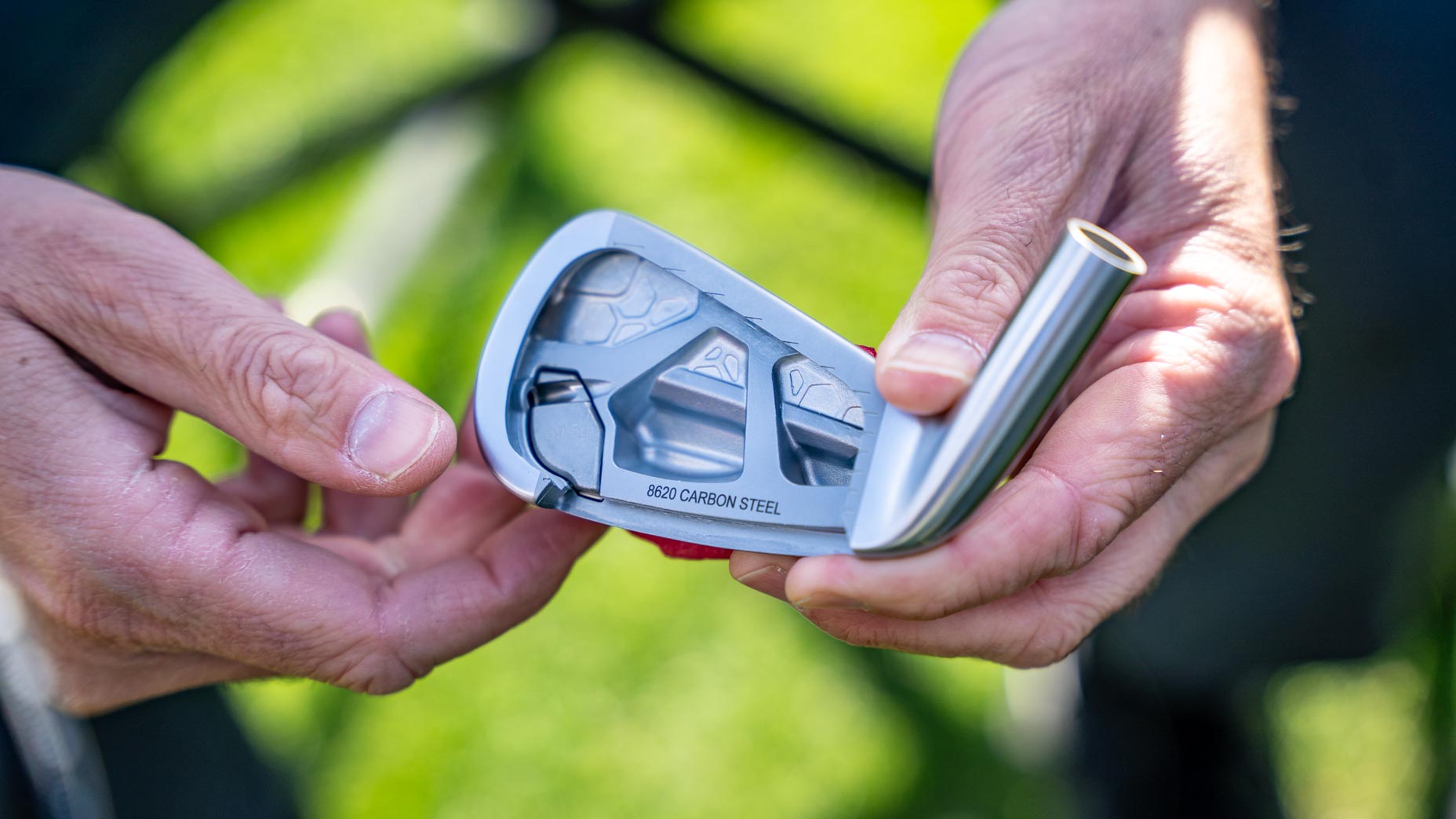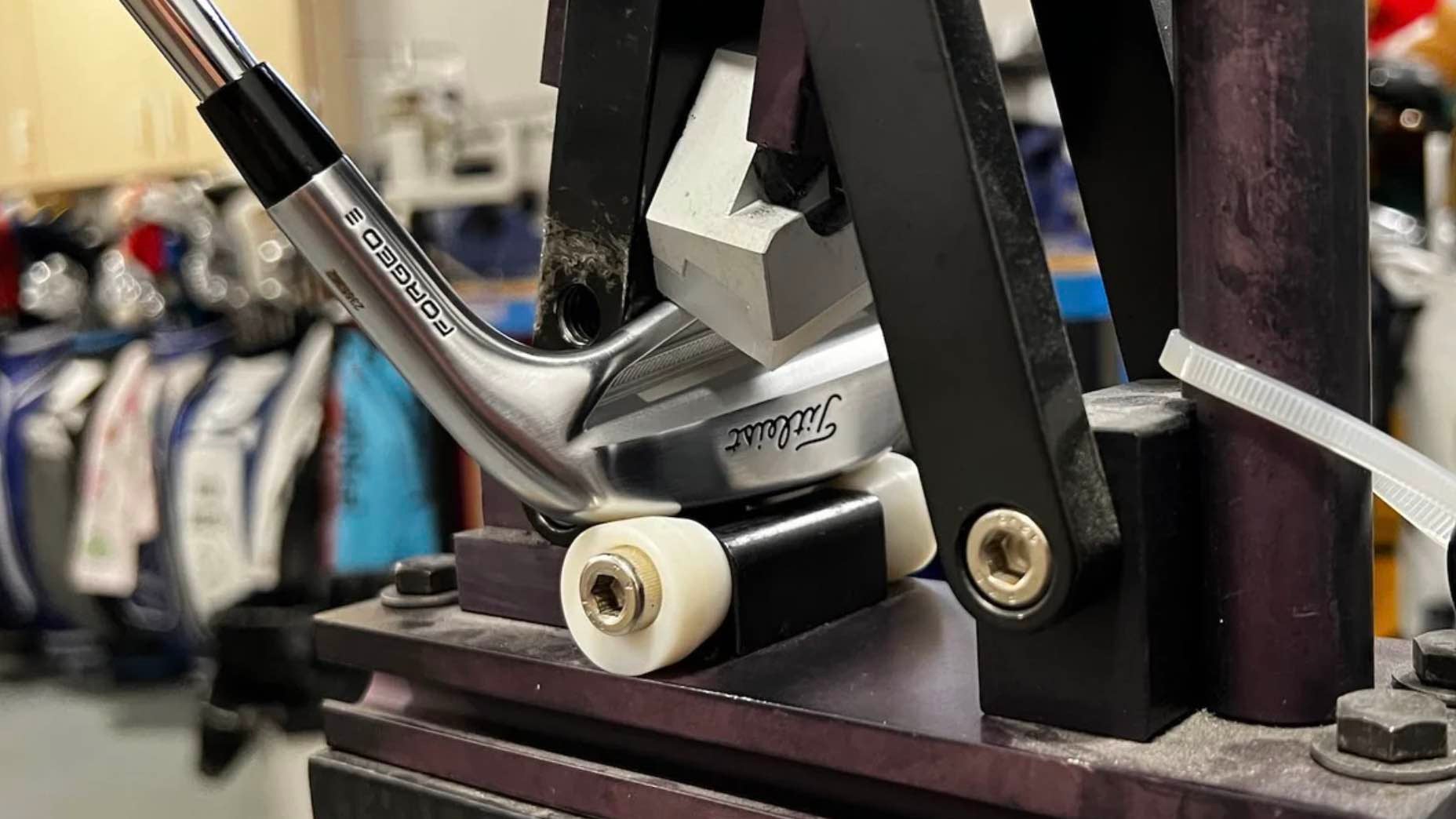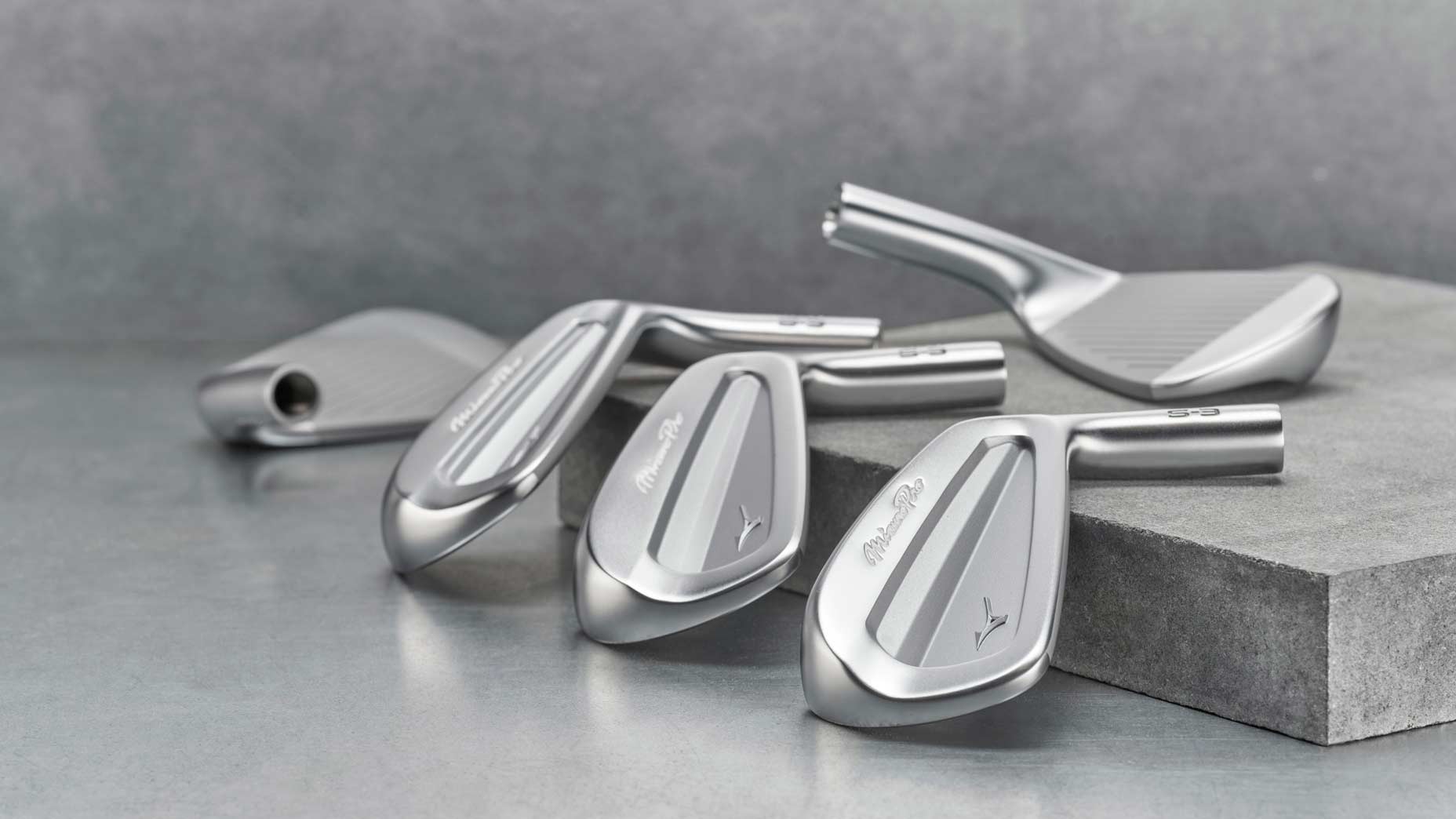Why do Ping irons have a notch in the hosel? | Fully Equipped Mailbag
- Share on Facebook
- Share on Twitter
- Share by Email
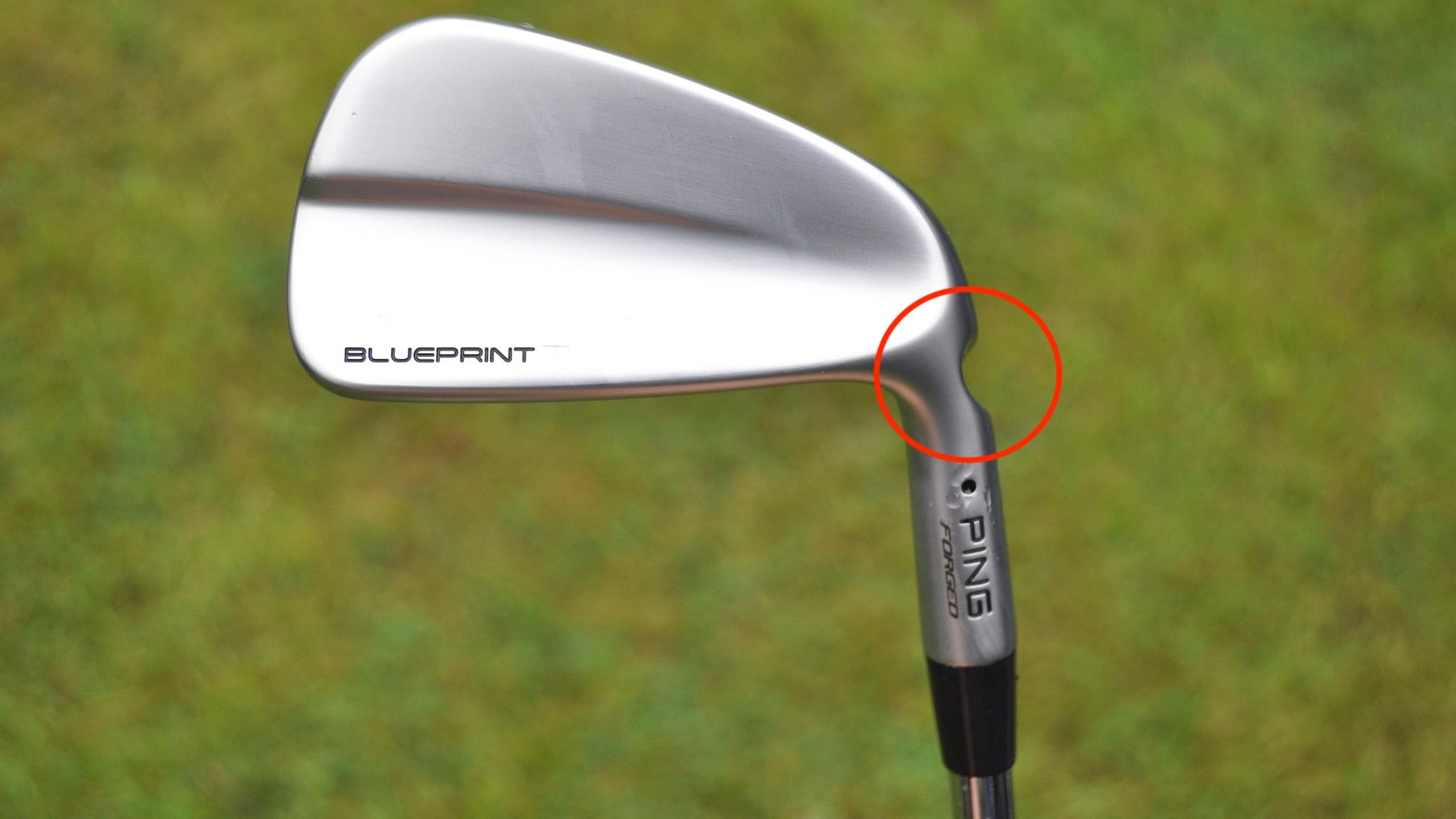
The hosel notch is an easy way to differentiate a Ping iron from its competitors.
Jonathan Wall/GOLF
Welcome to another edition of the Fully Equipped mailbag, an interactive GOLF.com series in which our resident dimplehead (a.k.a., GOLF’s managing editor of equipment, Jonathan Wall) fields your hard-hitting gear questions.
I’m a relative newcomer to golf who acquired a set of used Ping irons from my uncle. While playing with my buddies recently, I noticed my set has a scooped-out area in the neck, just above the head, that wasn’t found on their irons. Is that normal or a defect? — Cal, Nebraska
I can tell you with absolute certainty the notch is not a defect. Go look at some of Ping’s current irons — the i230 and G430 come to mind — and you’ll notice the “scooped-out area” is found on every head.
The simple answer is it helps Ping’s club-building team — or anyone working on a set of Ping irons — make loft and lie adjustments without much effort. Removing a section of metal makes bending the club exponentially easier, thereby reducing the possibility of damaging the hosel along the way.
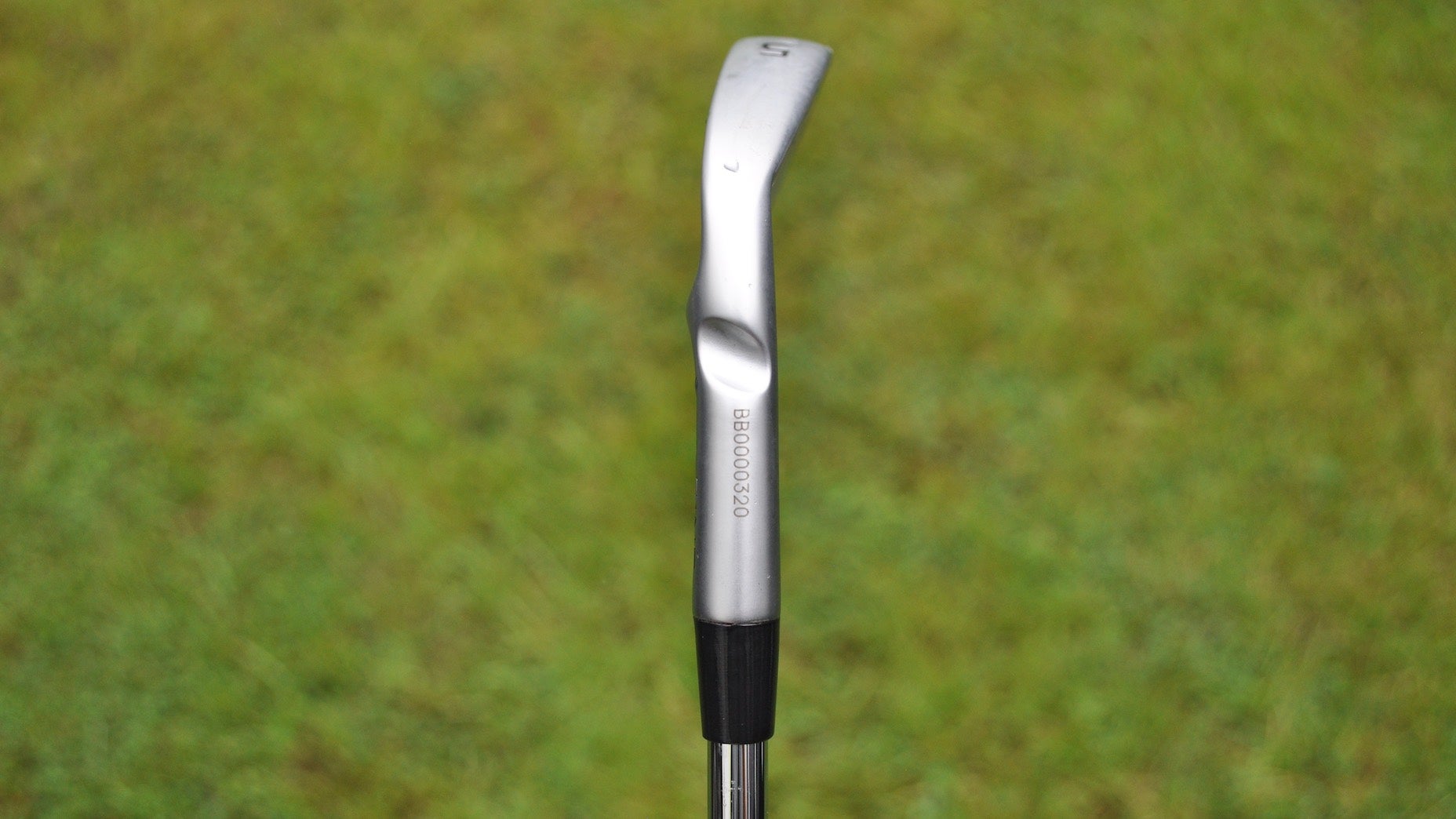
Take a look at Ping’s color-coded fitting chart and you’ll notice irons can be bent anywhere from 4 degrees flat to 5 degrees upright. It’s a substantial lie angle range that’s highly beneficial for golfers. As we’ve discussed in previous mailbags, dialing in the lie angle greatly increases your chances of consistent contact.
If your iron’s lie angles are too upright for your swing, you’ll likely make heel contact with the ball and leftward divots, which then lead to leftward pulls and hook shots. On the flip side, with a lie angle that’s too flat for your swing, it’s very likely you’ll make contact and divots from the toe section, which will push shots out to the right.

Ping i230 Custom Irons
View Product
What’s interesting is the notch didn’t become a design addition on Ping irons until the i3 was released in 2000. Go back and look at photos of the iconic ISI irons — released just before i3 — and you’ll find a substantial hosel affixed to the head, but no notch.
So why the design change? Prior to i3, Ping irons were cast from stainless steel that was extremely durable but didn’t take to being bent multiple times. When you consider a set of irons might have multiple owners during their lifetime, it’s easy to see how the hosel could snap at some point, especially if there was an extreme change in lie angle.
What’s great about the current notch is it remains concealed in the address position, so you can rest easy knowing it serves a valuable purpose but won’t get in the way.
Want to overhaul your bag for 2023? Find a fitting location near you at True Spec Golf.
Latest In Gear

Jonathan Wall
Golf.com Editor
Jonathan Wall is GOLF Magazine and GOLF.com’s Managing Editor for Equipment. Prior to joining the staff at the end of 2018, he spent 6 years covering equipment for the PGA Tour. He can be reached at jonathan.wall@golf.com.




